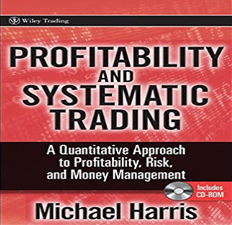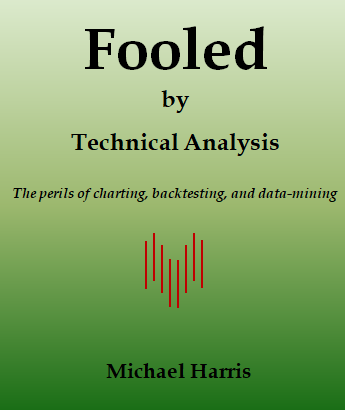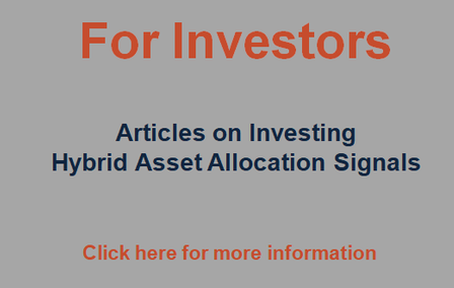The mean-reversion strategy uses the PSI5 algorithm to generate long-only signals for two ETFs and S&P 100 stocks in the daily timeframe. Registration information is provided below. The updates are typically available by 7:00 a.m. (ET) on weekdays. We do not send any email notifications of updates. Typically, the Price Action Lab Blog account on X (@priceactionlab) announces updates to this page. Read the Disclaimer below before subscribing.
Last update: April 7, 2025, after the close of the market. Click here to register.
Positions and New Signals
|
This post is for paid subscribers
Already a subscriber? Sign in |
Performance (Backtests) with SPY and QQQ
Performance is indicative only and depends on execution, slippage, and commissions.
Year to date performance
| Strategy | B&H Portfolio* | SPY ETF | |
| Return | -7.0% | -15.4% | -13.5% |
| Drawdown | -13.5% | -19.5% | -17.3% |
| Number of trades | 16 | 2 | 1 |
| Win rate | 62.5% | – | – |
Performance from the start of signal reports on June 27, 2023
| Strategy | B&H Portfolio* | SPY ETF | |
| Return | +10.7% | +19.4% | +18.4% |
| Max. Drawdown | -13.5% | -19.5% | -17.5% |
| Sharpe ratio | 0.58 | 0.64 | 0.71 |
| Beta (S&P 500) | 0.53 | 1.14 | 1 |
| Number of trades | 105 | 2 | 1 |
| Win rate | 72.4% | – | – |
* 50% SPY ETF and 50% QQQ ETF
Performance (Backtests) with S&P 100 stocks since March 24, 2025
| Strategy | S&P 100 Index | |
| Return | -10.3% | -15.4% |
| Max. Drawdown | -10.5% | -18.6% |
| Number of trades | 9 | – |
| Win rate | 11.11% | – |
| Total Days * | 10 | 10 |
* Start date: March 24, 2025. Performance is indicative only and depends on execution, slippage, and commissions.
Test period: The test period to decide whether we will continue offering the stock mean-reversion signals is until June 26, 2025 .
Daily Equity Performance and Entry and Exit Signals
|
This post is for paid subscribers
Already a subscriber? Sign in |
Historical Performance: 01/03/2000-12/31/2024
SPY and QQQ ETFs (50% allocation to each ETF, $0.01/share commission)
Win rate is 69.1%, 1,389 trades, the average holding period is 4.8 days, and exposure is 41.4%. Performance is indicative only and depends on execution, slippage, and commissions.
Monte Carlo Analysis of Maximum Drawdown (Equity Curve Changes)
The probability of a maximum drawdown of 50% or more is 5%. The probability of a maximum drawdown of more than 44% is about 25%. Note that Monte Carlo methods have several limitations, and these probabilities are conditioned on historical data and market regimes.
Historical Performance of 100% in SPY: 01/03/2000-12/31/2024
Historical Performance of 100% in QQQ: 01/03/2000-12/31/2024
Historical Performance for stocks: 01/03/2000-03/21/2025
Mean waiting time for a new signal
The chart below shows the number of days without a long signal, i.e., the time, measured in daily bars, between two successive long signals in SPY ETF.
The mean waiting time between signals has been 6.5 days, and 3 standard deviations are at 23.2 days.
The chart below shows the number of days without a long signal, i.e., the time, measured in daily bars, between two successive long signals in the QQQ ETF.
The mean waiting time between signals has been 4 days, and the three standard deviations are 14.3 days.
Access to daily mean-reversion signals requires registering for a mean-reversion signals subscription. Click here to register.
Using futures instead of ETFs
ES and NQ futures could replace SPY and QQQ or SPXL and TQQQ. However, trading hours are different, at least for now, and also the performance will depend on margin and account size. In addition, trading futures imposes additional constraints, for example, dealing with contract rollovers.
Backtests have shown that the strategy works with ES and NQ futures.
About the risks of mean-reversion strategies
Mean-reversion strategies are risky because the signals are designed to go against the short-term trend. Most strategies do not use a stop loss because it destroys profitability.
Mean-reversion strategies are for professional traders who understand risk and can manage it effectively.
Amateur traders can lose money even when using a profitable mean-reversion strategy because of fear of taking signals that go against the short-term trend.
Usually, professionals allocate a small percentage of capital to mean-reversion strategies.
We do not dynamically adjust exposure based on equity curve performance. There are two basic approaches for that: (a) decrease exposure and wait for the next profitable signal (anti-martingale) and (b) increase exposure to take advantage of an expected rebound (martingale). Note that (b) is an extremely risky strategy that can amplify losses and cause ruin.
Disclaimer: The Daily Mean-Reversion Signals (Signals) are provided for informational purposes only and do not constitute investment advice or actionable content. We do not warrant the accuracy, completeness, fitness, or timeliness for any particular purpose of the Signals. Under no circumstances should the Signals be treated as financial advice. The author of this website is not a registered financial adviser. Before subscribing, read our full Disclaimer and Terms and Conditions.










